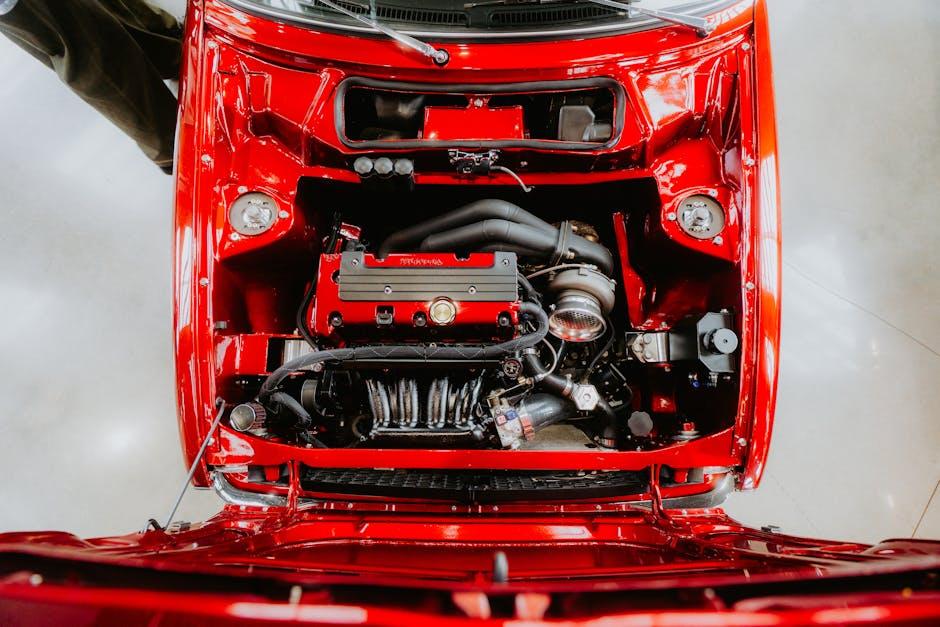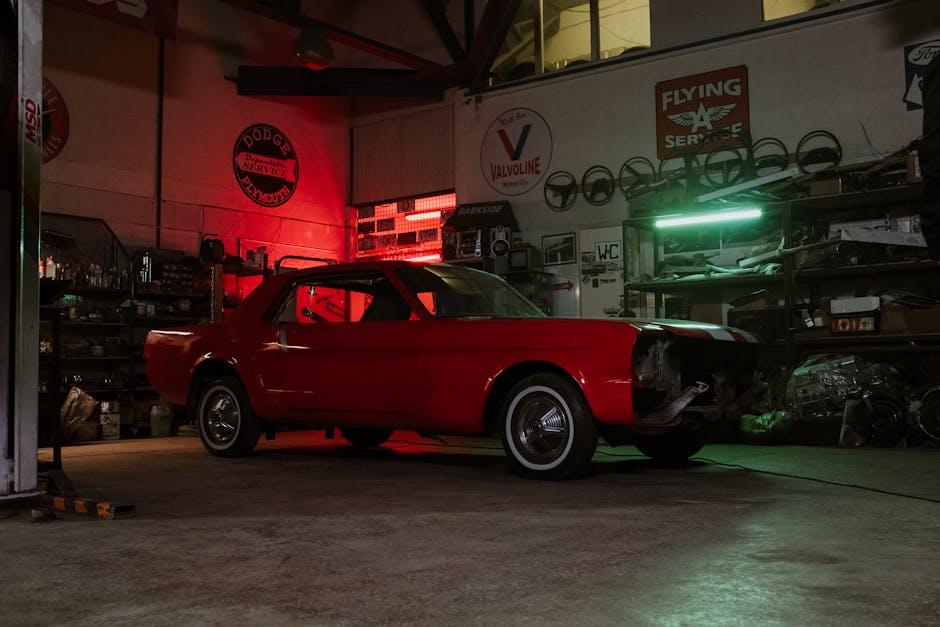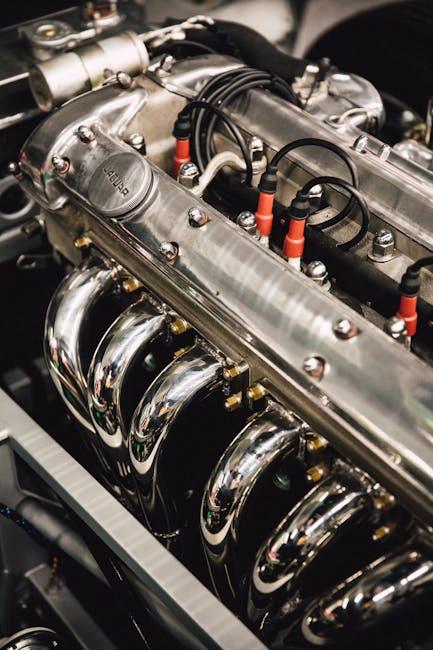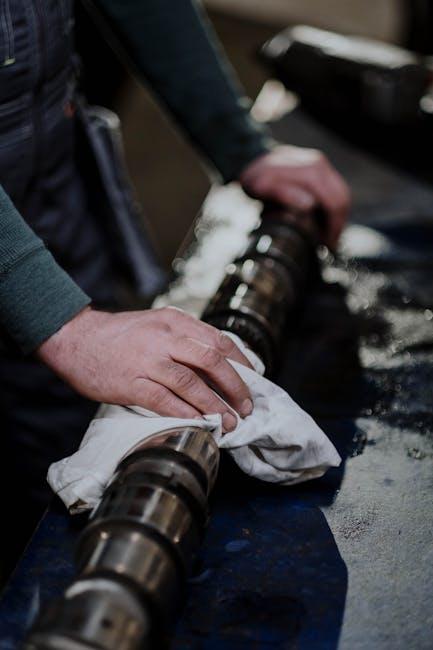Beneath the hood of every vehicle lies a complex symphony of metal, fluid, and machinery—working tirelessly to power your journey. Over time, this intricate engine environment can become cloaked in grime, dirt, and oil residue, quietly threatening performance and longevity. Whether you’re a seasoned gearhead or a casual car owner, maintaining a clean engine isn’t just about aesthetics; it’s a vital step in preserving your vehicle’s health. In this article, we’ll explore the best engine cleaning tips to help you safely and effectively restore that polished shine and ensure your engine continues to run smoothly for miles to come.
Table of Contents
- Choosing the Right Engine Cleaner for Your Vehicle
- Preparing Your Engine Bay for a Safe Cleaning
- Step-by-Step Guide to Effective Engine Degreasing
- Essential Tools and Materials for Engine Detailing
- Protecting Sensitive Components During the Cleaning Process
- Finishing Touches for a Spotless Engine Appearance
- Q&A
- Insights and Conclusions

Choosing the Right Engine Cleaner for Your Vehicle
When selecting an engine cleaner, it’s essential to consider the type of grime your vehicle accumulates and the material composition of your engine parts. Some cleaners are designed specifically for heavy grease and oil build-up, while others cater to light dirt or dust. Always check the label for compatibility with metal, rubber, and plastic components to avoid degradation or damage. Additionally, opting for a biodegradable or environmentally friendly formula ensures you’re not just protecting your engine but also minimizing your ecological footprint.
- Gel-based cleaners: Ideal for targeted application and longer dwell time on stubborn residues.
- Aerosol sprays: Perfect for quick, even coverage over larger engine surfaces.
- Foam cleaners: Expands on contact, reaching crevices and hard-to-access areas.
To further assist in choosing the right formulation, consider the following quick-reference table, which compares essential features of popular engine cleaning products:
| Cleaner Type | Best For | Eco-Friendly | Application Method |
|---|---|---|---|
| Gel | Heavy Grease | Moderate | Brush or Spray |
| Spray | Light Dirt | Low | Aerosol Spray |
| Foam | Crevices | High | Foam Dispenser |

Preparing Your Engine Bay for a Safe Cleaning
Before diving into the cleaning process, it’s essential to ensure your engine bay is ready for some TLC. Start by disconnecting the battery terminals to prevent any electrical mishaps — battery acid and water don’t mix well. Next, cover sensitive components like the alternator, exposed wiring, air intake, and fuse box using plastic bags or cling film to shield them from moisture. This simple step minimizes the risk of water damage and keeps your electronics safe during washing.
Once your engine bay is protected, give it a quick once-over to remove any loose debris with a soft brush or compressed air. This will make the cleaning more effective and prevent dirt from grinding into delicate parts. Establish a warm, shaded working area to ensure the engine bay dries promptly without leaving water spots or rusting components. Here’s a handy checklist to keep in mind:
- Disconnect battery terminals
- Cover sensitive electrical parts
- Remove loose dirt and debris
- Work in a shaded, ventilated area
- Gather all cleaning supplies beforehand

Step-by-Step Guide to Effective Engine Degreasing
Begin by ensuring the engine is cool to the touch—working on a hot engine can cause burns and damage components. Next, cover sensitive parts like the battery, air intakes, and electrical connections with plastic bags or cling wrap to prevent water intrusion. It’s crucial to start with a dry brush to loosen surface grime, focusing on areas with thick grease buildup. Use a stiff-bristle brush for stubborn patches, but avoid aggressive scrubbing that could harm hoses or wiring.
Once the surface dirt is loosened, apply a high-quality engine degreaser evenly, making sure to target greasy hot spots. Let it sit for 10 to 15 minutes to break down the oils deeply embedded in crevices. Use a garden hose with gentle water pressure or a spray bottle for rinsing to avoid flooding delicate parts. For a clearer picture:
| Step | Key Tip |
|---|---|
| Preparation | Cool engine & cover sensitive parts |
| Loosen Dirt | Dry brush before degreaser |
| Apply Degreaser | Even coverage, wait 10-15 mins |
| Rinse | Gentle water spray, avoid flooding |
Finally, dry the engine surface with microfiber towels and consider using compressed air to expel moisture from hidden areas. This minimizes rust risk and readies your engine for a fresh shine. For maintenance, repeat the process every few months or after particularly dirty road conditions to keep your engine looking pristine and performing optimally.

Essential Tools and Materials for Engine Detailing
Every successful engine detailing session begins with gathering the right set of tools and materials. Equipping yourself properly not only ensures a thorough clean but also protects sensitive engine components. Some essentials include engine degreasers formulated to break down grime without damaging rubber or plastic parts, soft-bristle brushes for delicate scrubbing, and a collection of microfiber towels to gently wipe surfaces without scratching. Additionally, a high-quality hose or pressure washer with adjustable settings helps rinse off loosened dirt with precision control to avoid oversaturating electrical elements.
Investing in protective gear increases both safety and effectiveness. Wearing gloves guards your skin from harsh chemicals, while safety goggles shield your eyes from splashes. If you want to take your engine detailing to the next level, consider these handy tools:
- Plastic covers and cling films – to shield electrical parts and air intakes
- Compressed air canister or air blower – for removing dust from hard-to-reach spots
- Foam applicator pads – for an even spread of degreasers or protectants
| Tool/Material | Purpose | Tip |
|---|---|---|
| Engine Degreaser | Breaks down oil and grease | Choose biodegradable formulas |
| Microfiber Towels | Surface wiping and drying | Use different towels for cleaning and drying |
| Soft-Bristle Brush | Gentle scrubbing | Perfect for tight corners and delicate parts |

Protecting Sensitive Components During the Cleaning Process
When cleaning your engine, it’s crucial to safeguard delicate parts that could easily suffer damage from water, chemicals, or high pressure. Components such as the alternator, exposed wiring, sensors, and the air intake system require extra attention. To avoid mishaps, cover these sensitive areas with plastic bags or waterproof tape before beginning the cleaning process. This simple precaution creates an effective barrier against moisture ingress, which can lead to short circuits or corrosion.
Additionally, avoid using harsh cleaners indiscriminately. Opt for gentle, engine-safe degreasers that break down grime without degrading rubber hoses or painted surfaces. Below is a quick overview of protection tips to keep in mind:
- Cover sensitive electrical parts: Use plastic wraps or foil.
- Use low-pressure water: Prevents water from being forced into tight seals.
- Choose pH-balanced cleaners: Safe for various engine materials.
- Avoid soaking the engine: Target grime spots instead of flooding the whole area.

Finishing Touches for a Spotless Engine Appearance
To elevate the clean look of your engine bay, focus on the details that bring everything together with a polished finish. After rinsing and drying, apply a high-quality engine dressing to restore that deep black shine to hoses and plastic components. Avoid silicone-based products for a natural look and longer-lasting effect. Use a microfiber cloth to evenly spread the dressing, ensuring no residue pools in crevices.
Don’t overlook the smaller metal parts—polishing them adds a professional touch that catches the eye. A dab of metal polish on bolts, clamps, and visible screws will brighten the entire engine bay. Additionally, consider these quick final steps:
- Cover exposed electricals: Use plastic wrap or aluminum foil to shield them during cleaning and remove afterward.
- Deodorize: A mild air freshener designed for cars can neutralize any lingering chemical smells.
- Check fluid caps: Wipe around them to remove any drips or smudges for a crisp finish.
| Finishing Task | Recommended Product | Estimated Time |
|---|---|---|
| Engine Dressing | Water-based Spray | 5 min |
| Metal Polishing | Aluminum Polish | 7 min |
| Electrical Protection | Plastic Wrap | 2 min |
Q&A
Q&A: Best Engine Cleaning Tips
Q1: Why is cleaning my engine important?
A1: A clean engine not only looks great but also runs cooler and can help you spot leaks or worn parts early. Dirt and grime can act as insulation, trapping heat, which may reduce engine efficiency and lifespan.
Q2: How often should I clean my engine?
A2: Typically, cleaning your engine every 6 to 12 months is sufficient, but it depends on your driving conditions. If you often drive on muddy roads or in dusty environments, more frequent cleaning might be necessary.
Q3: What’s the best time to clean my engine?
A3: Always wait until the engine is cool before cleaning. A hot engine can cause cleaners to evaporate too quickly or, worse, cause burns or damage delicate components.
Q4: Should I use a pressure washer to clean my engine?
A4: Pressure washers can be effective but must be used carefully. High pressure can drive water into sensitive electrical parts. Use a gentle spray setting and keep the nozzle at least a foot away from the engine.
Q5: What cleaning products are safe for engines?
A5: Use engine degreasers specifically formulated for automotive use. Avoid harsh chemicals like bleach or ammonia. Always check the product’s instructions and test on a small area if unsure.
Q6: How do I protect electrical connections during cleaning?
A6: Cover sensitive components such as the alternator, battery terminals, and exposed wiring with plastic bags or cling film. This prevents water from causing shorts or corrosion.
Q7: Can I clean the engine myself or should I hire a professional?
A7: DIY engine cleaning is doable with proper preparation and care. However, if you’re uncertain or uncomfortable around engine parts, a professional service can ensure a safe, thorough clean.
Q8: Are there any tips to maintain engine cleanliness longer?
A8: Regularly checking for leaks and promptly fixing them stops grease buildup. Also, washing the engine bay gently during routine car washes can help maintain cleanliness.
Q9: What should I avoid when cleaning the engine?
A9: Avoid flooding electrical components with water, using abrasive brushes that can damage hoses or wires, and high-pressure sprays aimed directly at delicate parts.
Q10: How can I tell if the engine cleaning made a difference?
A10: Besides a visibly cleaner engine bay, you might notice improved engine performance or cooler operating temperatures. It’s also easier to spot potential problems like leaks or worn belts during inspections.
Insights and Conclusions
As engine grime and buildup quietly chip away at performance, a thoughtful cleaning routine becomes more than just maintenance—it’s a way to extend the heart of your vehicle’s life. By combining the right tools, gentle techniques, and a touch of care, you can keep your engine running smoothly and looking sharp beneath the hood. Remember, a clean engine isn’t just about aesthetics; it’s about ensuring every journey starts with power and confidence. So gear up, follow these tips, and let your engine breathe easy, mile after mile.


33 Comments
https://shorturl.fm/EmJml
https://shorturl.fm/euOo2
https://shorturl.fm/whZVF
https://shorturl.fm/w55lM
https://shorturl.fm/nqItr
https://shorturl.fm/yyIrt
https://shorturl.fm/G74cN
https://shorturl.fm/roCfh
https://shorturl.fm/J76CC
https://shorturl.fm/mayr7
https://shorturl.fm/picTP
https://shorturl.fm/4MkXa
https://shorturl.fm/A3Vjt
https://shorturl.fm/kPIbB
https://shorturl.fm/VsCr8
https://shorturl.fm/8UBeO
https://shorturl.fm/ktXIX
https://shorturl.fm/db7lq
https://shorturl.fm/kVhlV
https://shorturl.fm/lxizg
https://shorturl.fm/PY3dz
https://shorturl.fm/I7a07
https://shorturl.fm/coVOi
https://shorturl.fm/tq53G
https://shorturl.fm/a41eU
https://shorturl.fm/yeF8U
husrdj
https://shorturl.fm/Qn0jo
https://shorturl.fm/DasLb
https://shorturl.fm/9hwVD
https://shorturl.fm/sf6DU
https://shorturl.fm/y48d2
https://shorturl.fm/YIL4b